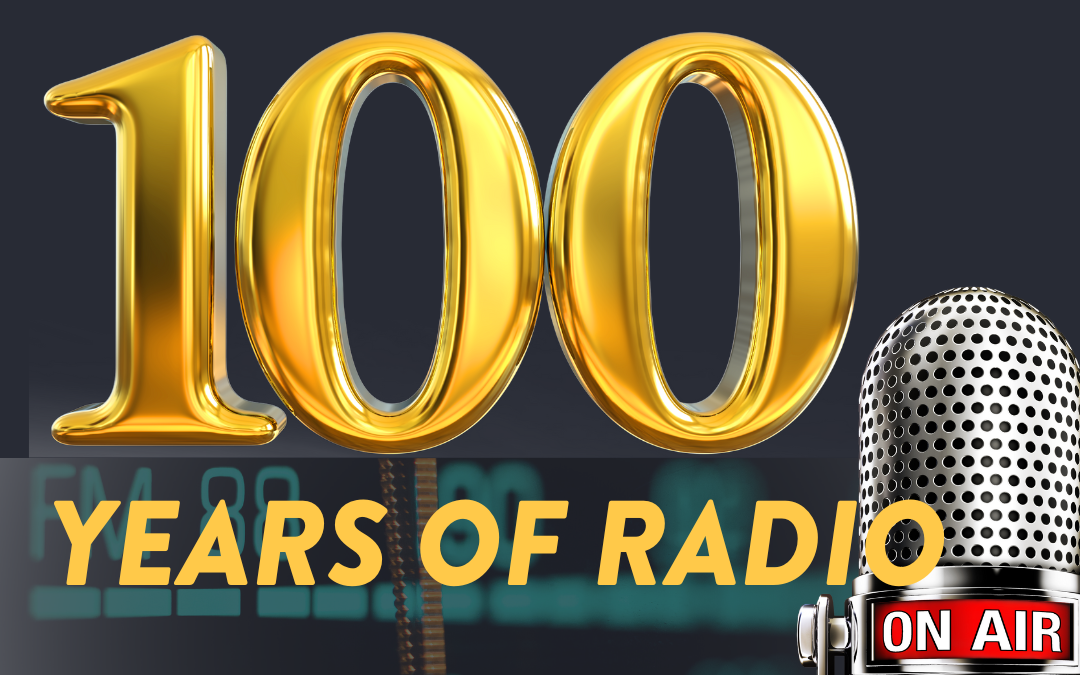CHANGE, COMPETITION AND THE FUTURE: CELEBRATING 100 YEARS OF AUSTRALIAN RADIO

By: Lauren McNamara
Today marks an important milestone in Australian history – 100 years of commercial radio.
On 23 November 1923, ABC Radio Sydney was the first continuously operating licenced radio station to broadcast in Australia. Initially called 2SB, it began broadcasting with a one-off gala concert from Philip Street in Sydney’s CBD.
But so much has changed since then… obviously. Constant technological advancements and changes to the digital landscape mean the industry is always adapting, growing and evolving into the future.
 Just one year after launching in NSW, radio went live in every other Australian state and territory, before the first ratings began in 1932 – where 200 housewives were surveyed.
Just one year after launching in NSW, radio went live in every other Australian state and territory, before the first ratings began in 1932 – where 200 housewives were surveyed.
In 1957, the first major technological advancement meant radio became portable, allowing listeners to tune in from more places than the kitchen or living room. Ten years later, in 1967, listeners became a part of the story, with the introduction of talkback radio. Before 1967, talkback was illegal, as the broadcast of telephone conversations was prohibited.
FM radio began in 1974, while from 1975-1980, more AM radio licences were released.
Arguably one of the largest innovations happened in 2009, when digital radio was introduced. There are now approximately 200 DAB+ stations in Australia.
Then, audience measurement systems improved, with GfK becoming the official supplier for the five major metropolitan markets in 2014. Finally, earlier this year, Radio360 launched – providing details on streaming listening numbers for the very first time.
Steve Ahern, manager of ABC Radio Sydney, says it’s an exciting time for the station.
“All of us at ABC Radio Sydney are extremely proud to be part of this historic milestone,” he says.
Changes to radio

(L-R): ABC Radio Sydney’s Steve Ahern, SBS Audio’s Davide Schiappapietra
“So much has changed since the station’s launch and we will continue to evolve in the next hundred years,” Ahern adds.
SBS Audio’s head of language content, Davide Schiappapietra says it’s been interesting to see the shift in radio: “It’s been fascinating to see the increasing shift from linear radio to digital audio on demand and, more recently, the rise of podcasting, as reflected in SBS Radio’s rebrand to SBS Audio last year.” He adds: “However, I believe the most significant change has been the integration of social media which has allowed us to not only talk to our audiences, but also to better listen. This has opened up a whole new era of engagement, something that was previously confined to isolated moments of radio talkback and attendance at community events.”
“One of the defining features of Australian radio is the localness.
Competition
Radio has had a number of competitors in its time, from cassette recorders, to TV and video, CDs, streaming services such as Spotify, and more recently, podcasts and AI. But it has withstood the test of time – despite concerns.
“The end of radio has been predicted various times over the past 100 years, first with the rise of television, then the internet, then streaming and podcasting, and finally today, with the advent of the AI era,” Schiappapietra comments.
“Nonetheless, radio has always found a way to endure and sometimes thrive, and I wouldn’t be surprised if it continues to do so throughout the next century.”
When cassettes were introduced in the 1960s, it “democratised radio”, according to Ahern.

“When the cassette recorder came, anyone could just buy it cheaply and record interesting things. Before that, to be a professional radio person, you had to have a big tape machine that was really heavy and costs tens of thousands of dollars,” he says.
Ahern remarks it was a worry for radio networks at first, but it turned out to be a great thing: “Cassette recorders let to the beginning of community radio. Anyone could make radio, basically.”
When television was introduced to Australia in 1956, people again worried it would disrupt radio.
Speaking to Mumbrella earlier this month, Nova Entertainment’s radio host Kent ‘Smallzy’ Small, said: “I mean people have always worried that other audio formats will kill radio – for crying out loud, in the 80s The Buggles released that song ‘Video Killed The Radio Star’ and it was the first music video shown on MTV in the US, and people really thought video would kill radio, but here we are.”
Charlton recalls when he started working in radio in the mid-90s, when people were saying ‘there’s only so much time left for commercial radio’.
“It was the advent of CDs, then iTunes, and then streaming platforms like Spotify where people thought radio was done for,” he comments. “But current surveys say there are more people listening to commercial radio in this country than ever before. And I think right now is the biggest change that’s ever happened – radio is so much more connected, and I think the digitalisation of it has been the most monumental change.”
Ennals agrees, saying: “There’s always a market for music – we had CDs, Spotify and such come in and disrupt, but those channels really didn’t eat into radio listening that much. And we’re seeing that now with podcasts.”
All the network leaders agree that radio and podcasts can continue to co-exist with one another.

Schiappapietra comments: “For the foreseeable future, I believe podcasts and radio will continue to complement each other, and we will see new means of distribution made possible by technological developments.”
Malone agrees, saying radio and podcasts fulfill different audience needs.
“Radio is a top line, broad level medium, reaching a lot of people at once. While podcasts are typically about discovery and niche content. They’re usually a deep dive for listeners engaged in a certain type of content, and that’s why they’ll continue to co-exist,” he says.
“Different audio channels makes things so exciting,” Charlton comments.
“Nobody is giving up listening, and podcasts just provide another channel for them. It’s that simple. Sure, it’s complicated in terms of saturation, but people are spending more time listening to them and the abundant choices makes it more interesting. We just need to create for that space in an appropriate way, to get good engagement.”
Ennals adds that the personalisation of content in podcasts gives it an advantage: “Podcasts will only continue to grow, because they’re so targeted, so personal, and people have such strong identifications with their favourite podcasts. But, I don’t think it will replace radio, I see it as very complementary.”
Digitalisation
In an increasingly digital world, the radio industry has managed to adapt and survive.
Ahern says ABC Radio is always “leveraging the power of digital”.

“We are making sure audiences can catch up with our content, because radio is very much an ephemeral medium. You broadcast it out there, and it’s gone. But these days, the digital landscape allows our audiences to catch up,” he says.
“We think the digital future is really exciting for both live linear radio and other audio offerings as well.”
Schiappapietra says SBS Audio has been focusing greatly on digitalisation, and continues to do so for the foreseeable future.
“In October 2023 we implemented a radio schedule update to better meet the changing consumption preferences of Australian audiences across our linear and digital audio platforms,” he says. “This includes more live radio in the daytime and more ways to catch-up on demand in the evening, with a focus on digital-first production across our full offering of radio, live streaming, digital publishing and podcasting, as well as content formats tailored to communities’ specific needs.”
As for Nine Radio, Malone says the network is continuing to evolve and expand, but it’s important to also maintain focus on its existing offerings.
“We need to make sure that we continue to be a really strong voice in each of our markets with regards to being live and local,” he says. “And we also need to make sure that we have that really deep connection with our audience and be the best local radio station we can.”
Charlton argues that despite some obvious innovations that have helped the radio industry grow and expand, the digital space is “hugely underdeveloped”.
“There’s still so much to learn and utilise to further this industry even more,” he says.
Ennals says radio needs to be across all digital platforms to continue thriving.
“Obviously the biggest shift has been the move to digital platforms. We expect people to continue listening in these different ways – on smartphones, smart devices, the lot,” he says.
“Radio is a prime medium for communication with just about everyone in the country, and it’s always going to be connected to communities. But it’s really important that we continue to adapt as technology improves, we need to move with the times.”
The future of radio
As for the future of radio, Ahern says it is a “great survivor”, and will continue to thrive.
 “It has always been a medium that’s evolved with technology, and that will continue for another 100 years,” he comments.
“It has always been a medium that’s evolved with technology, and that will continue for another 100 years,” he comments.
Schiappapietra agrees, saying: “People will continue to seek connection, and although we cannot predict the social developments of the next century, we can assume that oral communication will still be important.
“So one way or another, a medium similar to radio will likely exist.”
Malone says he’s never been more confident in the future.
“It’s a very resilient medium,” he comments. “It’s ubiquitous, you can consume it anywhere. And that’s the strength of radio, and I don’t think that will change.
“I think video will become an increasing part of radio, and I think you’ll see some more consolidation within the industry. The importance of brands and trusted voice will only grow too.”
Charlton argues there will always be a need for live information, entertainment and audio consumption: “That’s what radio can do. And technology in the future will just make that even easier than it is now. I definitely think there’s a place for radio in another 100 years, because it’s unique and can accompany you in anything you do in a day.”
Ennals concludes: “I don’t think radio is going anywhere. As long as people have ears, there will be radio.
“It will always be connected to Australia and its people, the only probable change is the way we receive it.”

 Just one year after launching in NSW, radio went live in every other Australian state and territory, before the first ratings began in 1932 – where 200 housewives were surveyed.
Just one year after launching in NSW, radio went live in every other Australian state and territory, before the first ratings began in 1932 – where 200 housewives were surveyed.




 “It has always been a medium that’s evolved with technology, and that will continue for another 100 years,” he comments.
“It has always been a medium that’s evolved with technology, and that will continue for another 100 years,” he comments.